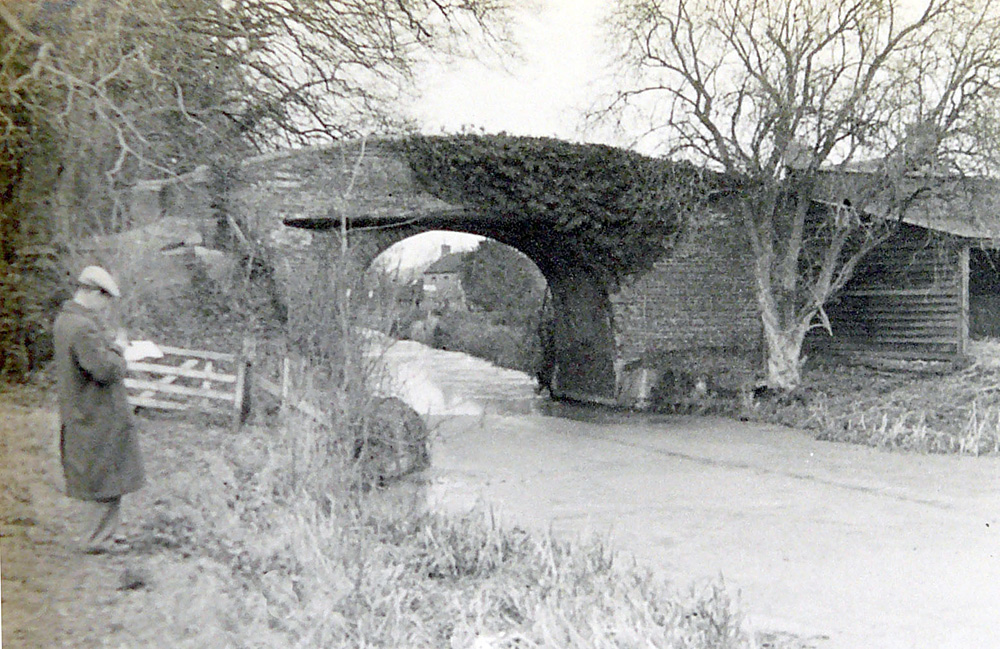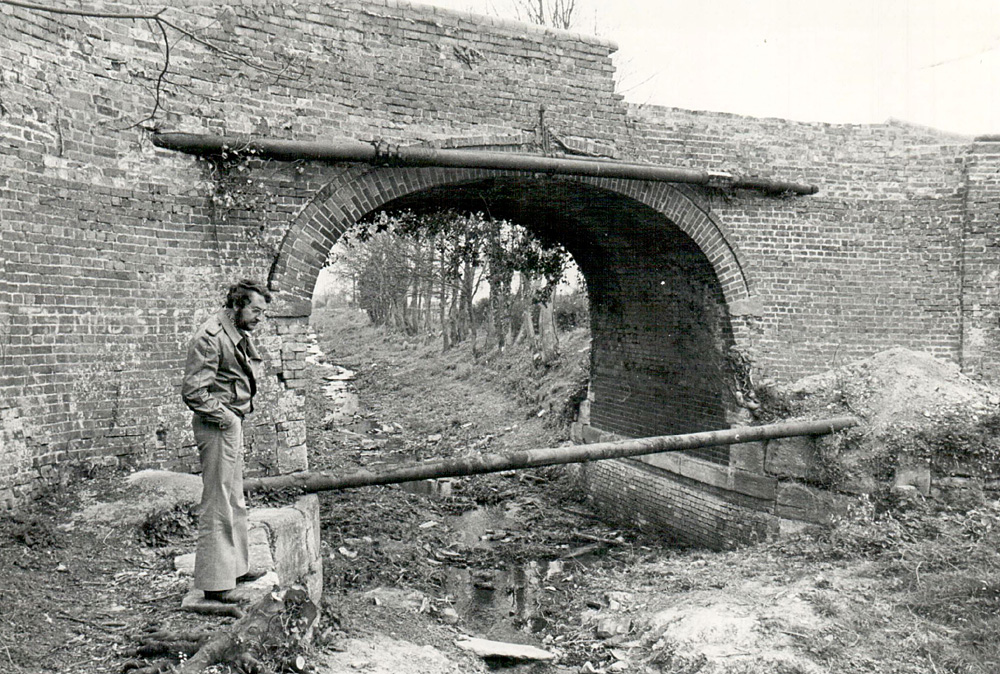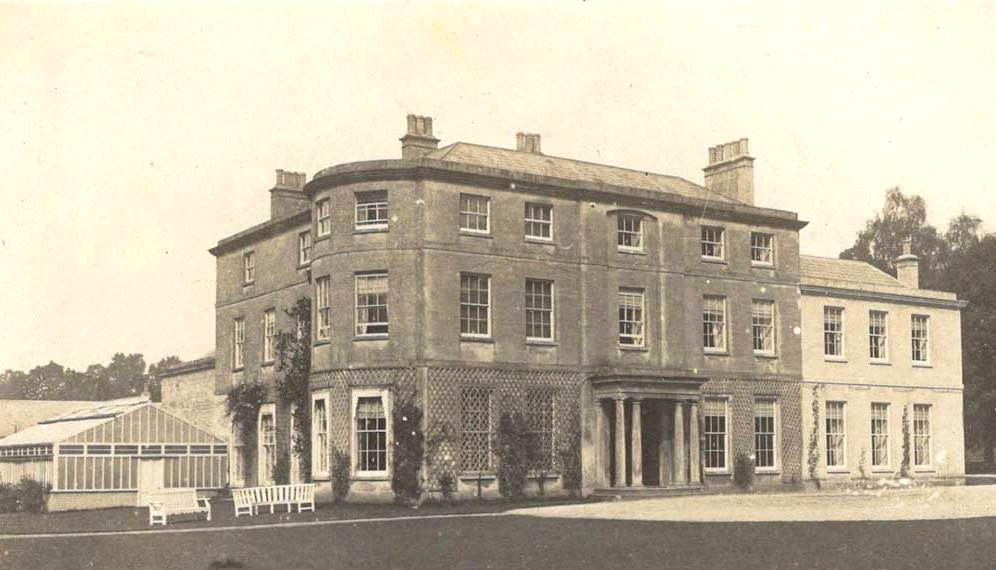

This private hump back bridge was built to carry a drive to the predecessor of Eastington Park, but now it only serves the lodge house just over the bridge.
The name 'roving' refers to it carrying the towpath from one side of the canal to the other because the original owner of of the land did not want the path to be adjacent to his fields. Strictly, it is not a full roving bridge as the towpath does not double back under the bridge and the towing line had to be detached when any boat passed through.


After the canal closed in 1954, a drainage pipe from a development at Stonehouse was installed across the canal at low level. In the 1980s, volunteers started repairs to the brickwork of the bridge, but the water pipe remained a blockage to full restoration.
Eventually, the water authority was persuaded to move the low level pipe. and in 1994 it was put into the same trench under the canal as a new sewer being installed nearby. When the volunteers were clearing debris from the canal bed after this installation, they found a couple of bags apparently discarded after a robbery. They contained items of cheap jewellery, coins, spoons and a cake stand, which were all handed in to Stonehouse police station.


Originally known as The Leaze with an entrance drive over Roving Bridge, the house was built for clothier Henry Hicks c1816 and was later occupied mainly by the families of men who had made their money in business.
Several references in the Stroudwater Company's archive refer to water from the canal at Newtown Lock being piped to the big house. The remains of a pipe were found by volunteers restoring Newtown Lock in the 1990s, and when they made enquiries, local people thought the pipe had supplied an ornamental fountain.
For the need for the towpath to change sides, see D1180/1/1 p142.
For replacement of Roving Bridge water pipe, see Trow Archive Mar 1994.
For finding cheap jewellery, see Trow Archive Sep 1994.
For history of The Leaze, see british-history.ac.uk/vch/glos/vol10/pp127-131.
For Thomas Marling agreeing to pay for a water pipe in 1870, see D1180/1/6 p72.
For volunteers finding the water pipe, see Trow Archive Mar 1996.